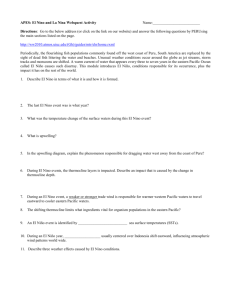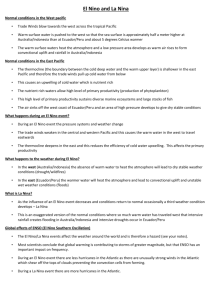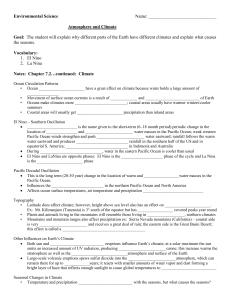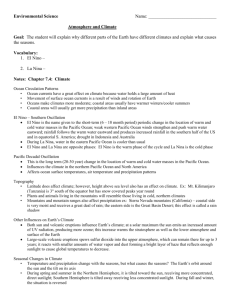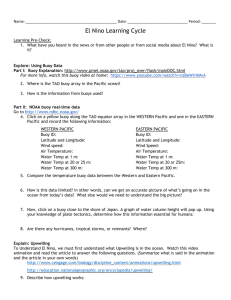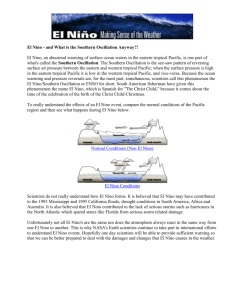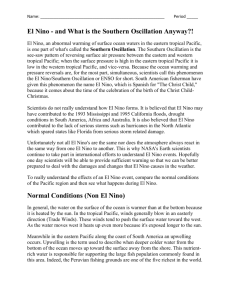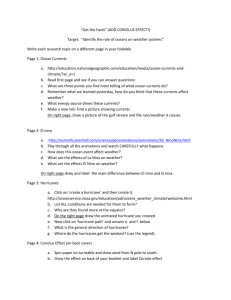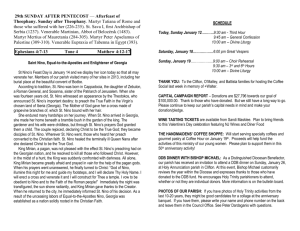El Nino Analysis Worksheet
advertisement
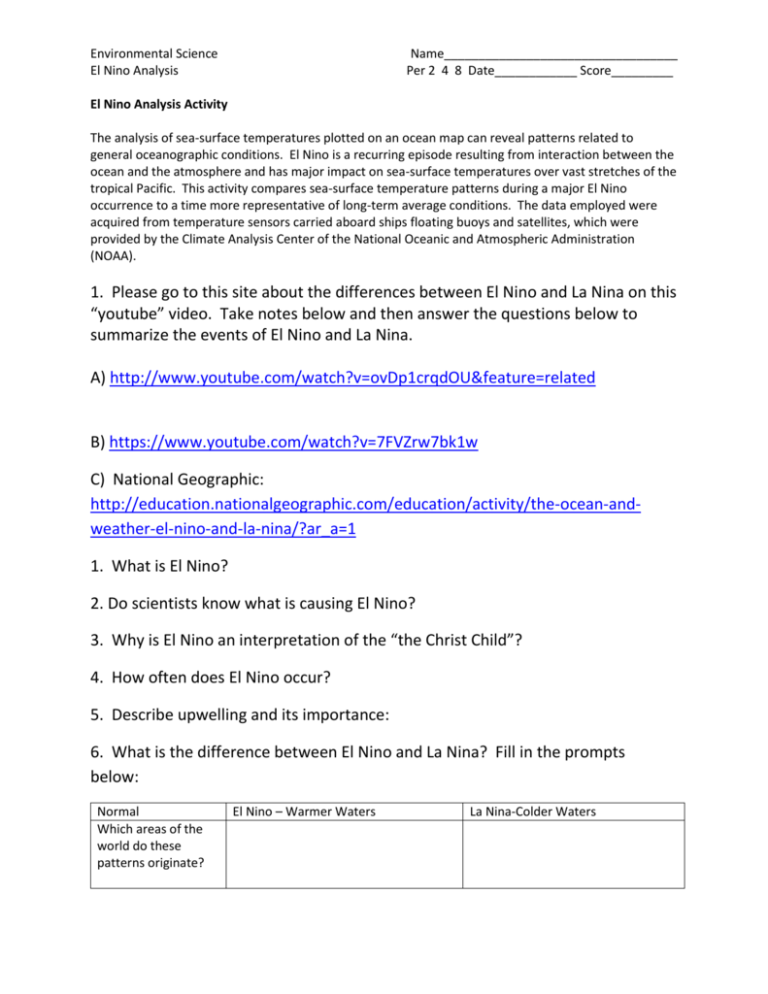
Environmental Science El Nino Analysis Name__________________________________ Per 2 4 8 Date____________ Score_________ El Nino Analysis Activity The analysis of sea-surface temperatures plotted on an ocean map can reveal patterns related to general oceanographic conditions. El Nino is a recurring episode resulting from interaction between the ocean and the atmosphere and has major impact on sea-surface temperatures over vast stretches of the tropical Pacific. This activity compares sea-surface temperature patterns during a major El Nino occurrence to a time more representative of long-term average conditions. The data employed were acquired from temperature sensors carried aboard ships floating buoys and satellites, which were provided by the Climate Analysis Center of the National Oceanic and Atmospheric Administration (NOAA). 1. Please go to this site about the differences between El Nino and La Nina on this “youtube” video. Take notes below and then answer the questions below to summarize the events of El Nino and La Nina. A) http://www.youtube.com/watch?v=ovDp1crqdOU&feature=related B) https://www.youtube.com/watch?v=7FVZrw7bk1w C) National Geographic: http://education.nationalgeographic.com/education/activity/the-ocean-andweather-el-nino-and-la-nina/?ar_a=1 1. What is El Nino? 2. Do scientists know what is causing El Nino? 3. Why is El Nino an interpretation of the “the Christ Child”? 4. How often does El Nino occur? 5. Describe upwelling and its importance: 6. What is the difference between El Nino and La Nina? Fill in the prompts below: Normal Which areas of the world do these patterns originate? El Nino – Warmer Waters La Nina-Colder Waters Environmental Science El Nino Analysis Wind Direction Water movement How is upwelling a factor in these 2 weather patterns? Describe how living organisms are affected. How is the economy affected by these weather patterns? Overall Weather impacts: Name__________________________________ Per 2 4 8 Date____________ Score_________ Environmental Science El Nino Analysis Name__________________________________ Per 2 4 8 Date____________ Score_________ Overall Weather Changes: Ocean Upwelling Environmental Science El Nino Analysis Name__________________________________ Per 2 4 8 Date____________ Score_________ Answer Key. Normal Normal ocean shore upwelling in Pacific Ocean – prevailing winds blow east to west. El Nino – Warmer Waters West winds weaken or reverse direction. Warmer waters of western Pacific move toward coast of South America, which prevents the upwelling of cold nutrientrich water. This reduces the primary productivity and causes a decrease in some fish species. La Nina-Colder Waters Opposite of El Nino. Cools some coastal surface water and upwelling of ocean currents returns. More Atlantic ocean hurricanes. Colder winters in Canada and northeastern US. Warmer and drier winters in southeast and southwest US. Occurs between Indonesia/Australia and South America. Wetter winters in Pacific northwest. Effects of El Nino: 1. Moist air from Pacific and Gulf of Mexico inland cause violent storms and rain from California to the Midwestern states. 2. Droughts in Australia and Indonesia which cause crop failures and even forest fires. 3. Warm periods in Alaska and northeastern Canada. 4. High rainfall in western and southern South America. 1977-1997: North Pacific Alaska had cooler water – salmon bountiful Western US: warmer waters and salmon were diminished. Lower wheat yields in Argentina, South America. Torrential rains in southeast Asia. Wildfires in Florida.
